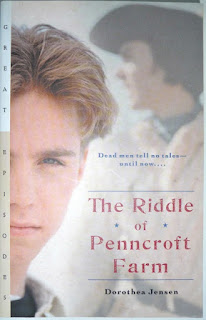 Now I believe I was able to do the accuracy part pretty well in my first historical novel for kids, The Riddle of Penncroft Farm, because I received this review on Amazon:
Now I believe I was able to do the accuracy part pretty well in my first historical novel for kids, The Riddle of Penncroft Farm, because I received this review on Amazon:As an author of 6 books on the Rev War, including 2 for young adults, I was very pleased to find that this book by Dorothea Jensen did not have any historical inaccuracies. So many best selling YA authors' novels are full of inaccuracies. Her descriptions of scenes/action/feelings in 1777, as related in conversation between the ghost Geordie and the main character Lars, were detailed, vivid and entertaining. I highly recommend this book for middle school students. The glossary at the back was helpful, and again, accurate.
Very satisfying!!
In writing my new historical novel for middle graders, A Buss from Lafayette, I again have tried to keep the historical parts accurate. Sometimes I have taken this to extremes.
In the following passage, for example I described the arrival of the daily stagecoach in the village of Hopkinton, New Hamphire, in June, 1825.
* * *
"The egg-shaped stagecoach came into view at the other end of the village, and the driver soon pulled his four horses to a stop in front of the store. The leather curtains on the sides of the coach were all rolled up, so we could see that the inside seats were jammed with passengers.
The old veteran bowed to me. On a sudden impulse, I said: “I shall give you a buss, sir, to honor your service to our country, but I fear I have no posy to give you.”
He chuckled and bent over.
After I gave him a smacking kiss on the cheek, he climbed up to the box on the coach and sat next to the driver."
- A Buss from Lafayette, Copyright 2016 by Dorothea Jensen
* * *
I had Mixed Feelings when I wrote this. Only about seven miles from where I am typing this post stood the Abbot Downing "waggon" factory, which manufactured the Concord Coach. This sturdy vehicle came to be used in the Wild West (they are the stagecoaches seen in films like, obviously, the John Wayne movie, Stagecoach.). As a long time New Hampshire woman, I r-e-a-l-l-y wanted to describe a Concord Coach coming into the village.
But BUSS is set in 1825 and, guess what? Abbot Downing did not start making Concord Coaches until 1828! Therefore, in the interests of accuracy the coach coming into Hopkinton Village had to be one of the old-fashioned egg-shaped ones.
Rats!





No comments:
Post a Comment